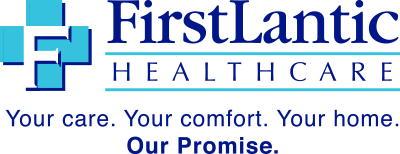It’s that dreaded time of year again—tax season. And if you are like many Americans you have procrastinated, and you now have to scramble to get your taxes filed in time to meet the deadline. Fortunately for you, FirstLantic hourly care has put together a last-minute list of tips so that you don’t miss out on important deductions for this year or in the future.
1. Increased standard deduction amounts
• Single or married filing separately – $12,000
• Married filing jointly or qualifying widow ((er) – $24,000
• Head of household – $18,000
2. Healthcare spending deductions
You can deduct expenses paid to cover a loved one’s unreimbursed medical costs if the qualified medical expense of everyone claimed on your tax returns totals more than 7.5% of your adjusted gross income for 2018 AND your total itemized deductions are more than your standard deduction.
Wow—if that sounds confusing (and it is) go IRS Publication 502 to confirm, however, here is a sample of some possible deductions:
• Transportation to appointments or services
• Adult day care or in-home health care worker if you are working
• Activities for older people with special needs
• Home and vehicle modifications needed for safety or mobility
• Cost of professional health aide during respite care
• Hotel near treatment center (up to $50 per night per person)
• Copays and deductibles
• Accepted therapies not covered by insurance
• Glasses
• Acupuncture
• Physical therapy
• Bandages
• Hearing aids
• Assisted living charges when needed for medical reasons
• Prescribed medicines and equipment, such as a cane or walker
• Insulin
3. Long Term Care Insurance
Individuals who itemize may be able to include qualifying long-term care insurance premiums paid during a taxable year among their other deductible medical expenses. The maximum amount of long-term care insurance premiums you can deduct per person is limited, though it is rising with inflation:
• Age 40 or under: $420
• Age 41 to 50: $780
• Age 51 to 60: $1,560
• Age 61 to 70: $4,160
• Age 71 or over: $5,200
Your policy must be tax-qualified in order to deduct which is usually indicated on the first page of your insurance contract. For more information on specific information, go here >
4. Beware of tax scams
Be careful of new scams that are being used to get people to divulge their personal information. The IRS generally initiates contact about an issue through the U.S. Postal Service and not by phone. In the odd case that you do receive a phone call, the IRS would never threaten arrest, deportation, or demand immediate payment. Increasingly, these unethical players are “spoofing” the IRS phone number, emailing false tax transcripts to insert malware on someone’s computer when they click on the link, and falsely impersonating tax professionals. Click here to learn how to protect yourself >
5. Additional support
In addition to April being tax month, it is also financial literacy monthso take advantage of tools specifically available for older adults such as free tax preparation and suggestions for managing your budget more effectively. For help with tax preparation, the IRS as well as AARP offer free resources. The IRS program is called Volunteer Tax Income Assistance and Tax Counseling for the Elderly. Click here for information on AARP tax aide >
The National Council on Aging offers a free online screening tool called Benefits CheckUp to help make sure you take advantage of discounts that you may qualify for on prescriptions, healthcare, food, housing and more.
The Consumer Financial Protection Bureau also offers a number of tools to help older adults learn how to manage debt and retirement planning.
For questions on benefits or to get a social security 1099 >
Click here to read more FirstLantic blogs >
 AVAILABLE 24 HOURS A DAY/7 DAYS A WEEK
AVAILABLE 24 HOURS A DAY/7 DAYS A WEEK Careers
Careers







